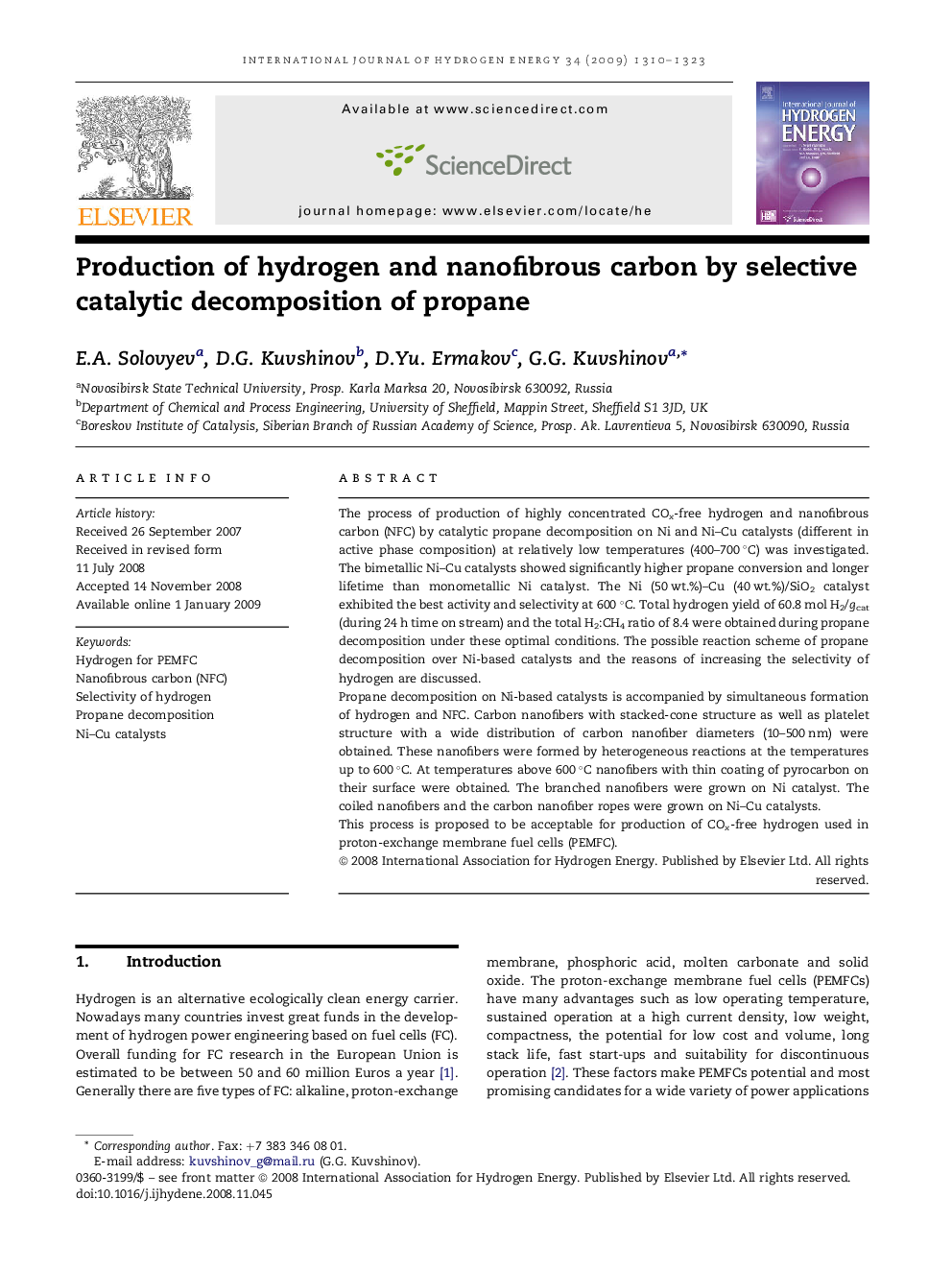| Article ID | Journal | Published Year | Pages | File Type |
|---|---|---|---|---|
| 1283339 | International Journal of Hydrogen Energy | 2009 | 14 Pages |
The process of production of highly concentrated COx-free hydrogen and nanofibrous carbon (NFC) by catalytic propane decomposition on Ni and Ni–Cu catalysts (different in active phase composition) at relatively low temperatures (400–700 °C) was investigated. The bimetallic Ni–Cu catalysts showed significantly higher propane conversion and longer lifetime than monometallic Ni catalyst. The Ni (50 wt.%)–Cu (40 wt.%)/SiO2 catalyst exhibited the best activity and selectivity at 600 °C. Total hydrogen yield of 60.8 mol H2/gcat (during 24 h time on stream) and the total H2:CH4 ratio of 8.4 were obtained during propane decomposition under these optimal conditions. The possible reaction scheme of propane decomposition over Ni-based catalysts and the reasons of increasing the selectivity of hydrogen are discussed.Propane decomposition on Ni-based catalysts is accompanied by simultaneous formation of hydrogen and NFC. Carbon nanofibers with stacked-cone structure as well as platelet structure with a wide distribution of carbon nanofiber diameters (10–500 nm) were obtained. These nanofibers were formed by heterogeneous reactions at the temperatures up to 600 °C. At temperatures above 600 °C nanofibers with thin coating of pyrocarbon on their surface were obtained. The branched nanofibers were grown on Ni catalyst. The coiled nanofibers and the carbon nanofiber ropes were grown on Ni–Cu catalysts.This process is proposed to be acceptable for production of COx-free hydrogen used in proton-exchange membrane fuel cells (PEMFC).
